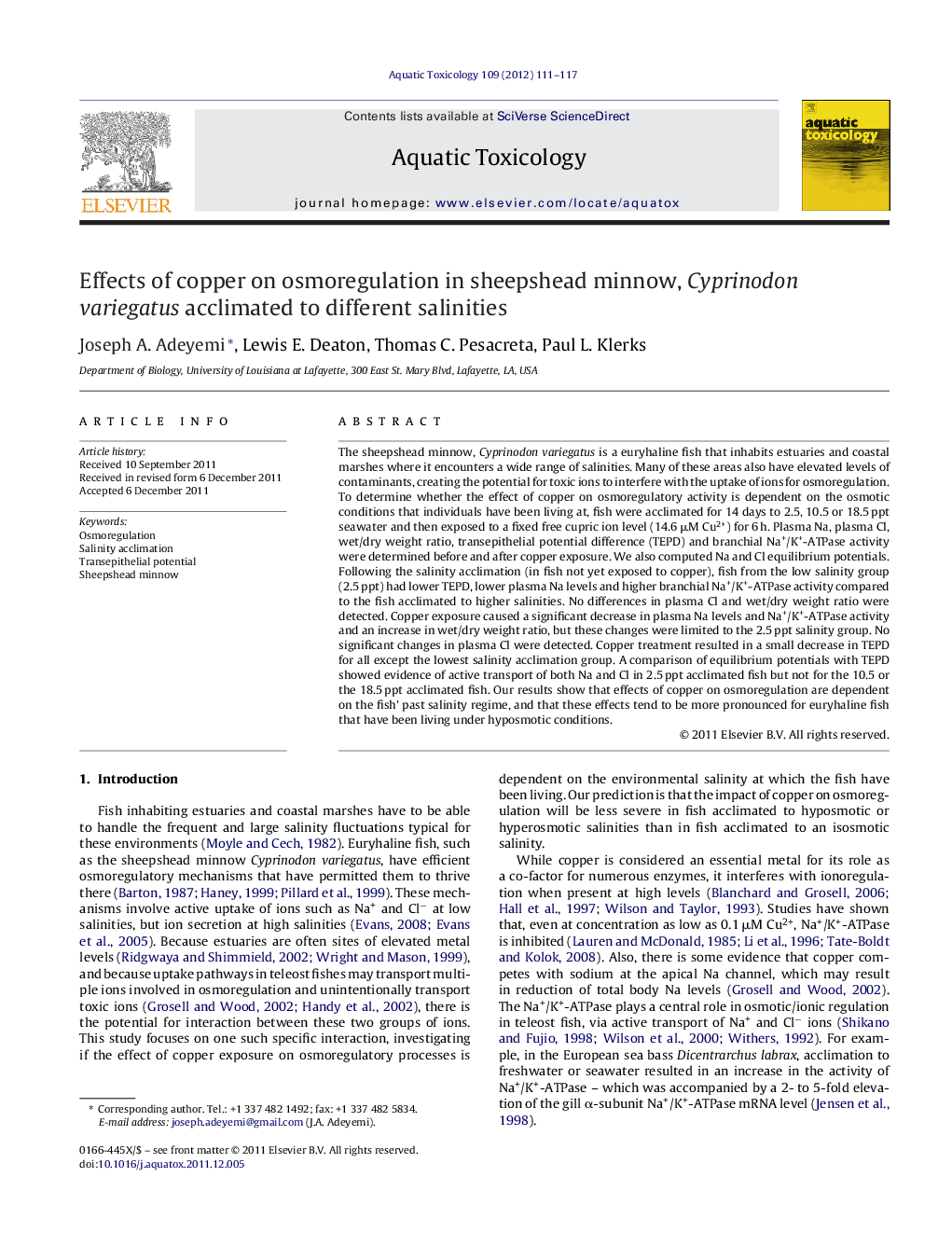| کد مقاله | کد نشریه | سال انتشار | مقاله انگلیسی | نسخه تمام متن |
|---|---|---|---|---|
| 6382818 | 1625979 | 2012 | 7 صفحه PDF | دانلود رایگان |

The sheepshead minnow, Cyprinodon variegatus is a euryhaline fish that inhabits estuaries and coastal marshes where it encounters a wide range of salinities. Many of these areas also have elevated levels of contaminants, creating the potential for toxic ions to interfere with the uptake of ions for osmoregulation. To determine whether the effect of copper on osmoregulatory activity is dependent on the osmotic conditions that individuals have been living at, fish were acclimated for 14 days to 2.5, 10.5 or 18.5 ppt seawater and then exposed to a fixed free cupric ion level (14.6 μM Cu2+) for 6 h. Plasma Na, plasma Cl, wet/dry weight ratio, transepithelial potential difference (TEPD) and branchial Na+/K+-ATPase activity were determined before and after copper exposure. We also computed Na and Cl equilibrium potentials. Following the salinity acclimation (in fish not yet exposed to copper), fish from the low salinity group (2.5 ppt) had lower TEPD, lower plasma Na levels and higher branchial Na+/K+-ATPase activity compared to the fish acclimated to higher salinities. No differences in plasma Cl and wet/dry weight ratio were detected. Copper exposure caused a significant decrease in plasma Na levels and Na+/K+-ATPase activity and an increase in wet/dry weight ratio, but these changes were limited to the 2.5 ppt salinity group. No significant changes in plasma Cl were detected. Copper treatment resulted in a small decrease in TEPD for all except the lowest salinity acclimation group. A comparison of equilibrium potentials with TEPD showed evidence of active transport of both Na and Cl in 2.5 ppt acclimated fish but not for the 10.5 or the 18.5 ppt acclimated fish. Our results show that effects of copper on osmoregulation are dependent on the fish' past salinity regime, and that these effects tend to be more pronounced for euryhaline fish that have been living under hyposmotic conditions.
⺠Effects of copper on osmoregulation were investigated in sheephead minnows that have been acclimated to different salinities. ⺠Copper's effects were dependent on the fish' past salinity regime. ⺠Effects were more pronounced for fish that have been living under hyposmotic conditions.
Journal: Aquatic Toxicology - Volume 109, March 2012, Pages 111-117